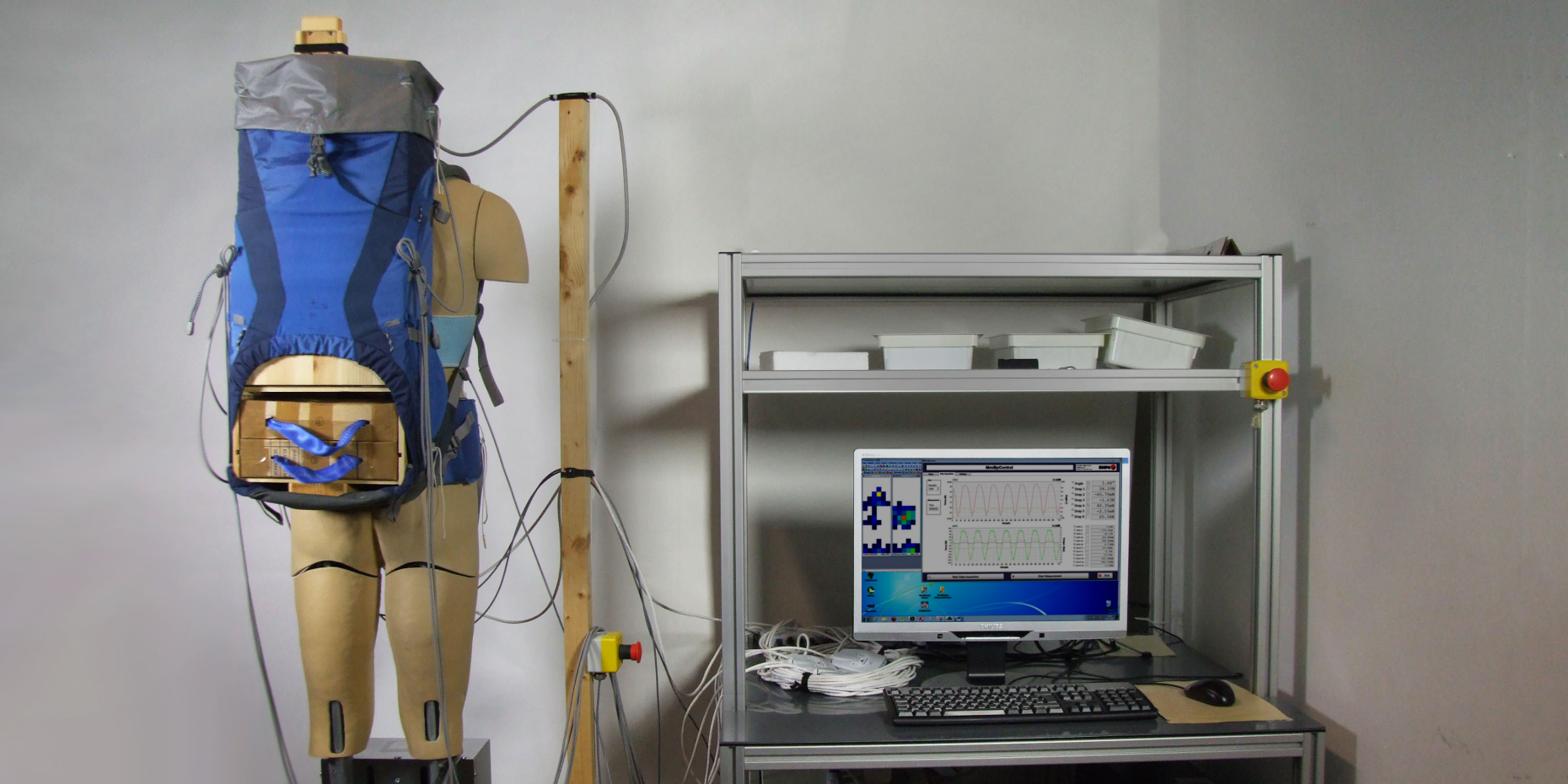Comparing discomfort and risk of low back pain or injury during load carriage
Concerning load carriage in the fields of outdoor activities, infantry and school children, discomfort and risk of low back pain or injury are key issues. Three quarters of adolescent backpack wearers suffer from neck or back pain. While discomfort during load carriage is considered a less severe medical issue, it has considerable influence on user acceptance. In the past decades, attempts to define widely accepted load limits, e.g. for school children, have not been successful. On the contrary, loads increased over the last decades for school children as well as for soldiers. Therefore, to improve discomfort and to decrease the risk of low back pain or injury during load carriage, the designs of load carriage systems have to be optimized. However, currently, the manufacturers’ possibilities are limited, as there is a lack of objective criteria for discomfort and a lack of practicable measurement tools for the risk of low back pain or injury.
Regarding discomfort, thermal aspects are well understood, but little is known about the mechanical parameters associated with discomfort. The first goal of this project is to identify objectively measured mechanical predictors of discomfort during load carriage. Once significant predictors are identified, the validation of a physical model will be targeted, in order to contribute an efficient tool for the comparison and development of load carriage system design.
Risk factors of low back pain or injury are known, like cumulative compression and peak shear loading in the L4/L5 spinal juncture, but in-vivo measurements of these risk factors are impossible. The second goal of this project is to enable the measurement of the risk factors for low back pain or injury during load carriage using a combination of physical and numerical modeling.
Contact
No database information available

